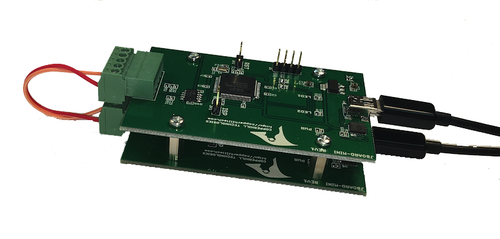Recent Posts
Understanding SAE J1939 and Telematics
Posted by on
 SAE J1939 is a high-level communications protocol standard widely used in the commercial vehicle industry. Developed by the Society of Automotive Engineers (SAE), it is primarily utilized for communication and diagnostics among vehicle components and systems, including engines, transmissions, and braking systems. When integrated with telematics, SAE J1939 unlocks new possibilities for vehicle monitoring, diagnostics, and fleet management.
SAE J1939 is a high-level communications protocol standard widely used in the commercial vehicle industry. Developed by the Society of Automotive Engineers (SAE), it is primarily utilized for communication and diagnostics among vehicle components and systems, including engines, transmissions, and braking systems. When integrated with telematics, SAE J1939 unlocks new possibilities for vehicle monitoring, diagnostics, and fleet management.
The SAE J1939 Protocol
SAE J1939 is based on the Controller Area Network (CAN) protocol and operates on a robust, multi-master, and message-oriented framework. It defines a structured methodology for transmitting data in vehicular networks, ensuring compatibility and interoperability between various Electronic Control Units (ECUs). The protocol specifies:
- Parameter Group Numbers (PGNs): These identify specific data or messages, such as engine speed, fuel consumption, or fault codes.
- Data Length Codes (DLCs): These indicate the size of the data payload.
- Source Addresses (SAs): These identify the origin of the data message.
- Broadcast and Addressable Communication: Messages can be sent to all nodes (broadcast) or a specific device (point-to-point).
With its real-time capabilities, SAE J1939 is a cornerstone for diagnostics and vehicle data acquisition in heavy-duty and off-road applications.
What is Telematics?
Telematics is the intersection of telecommunications and informatics, enabling the collection, transmission, and analysis of data from vehicles. Telematics systems use wireless communication technologies, GPS, and cloud-based analytics to provide actionable insights. Common features of telematics include:
- Vehicle Tracking: Real-time location monitoring using GPS.
- Fleet Management: Optimizing routes, fuel usage, and maintenance schedules.
- Remote Diagnostics: Accessing vehicle performance data and identifying issues before they escalate.
- Driver Behavior Analysis: Monitoring speed, braking patterns, and other driving habits to improve safety.
The Integration of SAE J1939 and Telematics
The combination of SAE J1939 and telematics creates a powerful platform for enhanced vehicle management. By leveraging the standardized communication framework of SAE J1939, telematics systems can extract and transmit detailed vehicle data to centralized platforms for analysis and decision-making. Key benefits include:
- Enhanced Diagnostics: Telematics systems can decode fault codes and performance metrics from J1939 messages, enabling predictive maintenance and minimizing downtime.
- Improved Fleet Efficiency: Real-time data on fuel consumption and engine performance allows fleet managers to optimize operations.
- Regulatory Compliance: Telematics systems, using J1939 data, can ensure compliance with emissions standards and electronic logging requirements.
- Safety Monitoring: Integration with J1939 data streams provides insights into critical safety systems like braking performance and stability controls.
Use Cases in Industry
SAE J1939 and telematics find applications across various industries:
- Trucking and Logistics: Monitoring fuel efficiency, ensuring regulatory compliance, and optimizing routes.
- Construction Equipment: Real-time tracking of machinery usage and performance.
- Agriculture: Precision farming with advanced monitoring of tractors and harvesters.
- Public Transportation: Enhancing fleet safety, scheduling, and maintenance.
Challenges and Future Directions
While the integration of SAE J1939 and telematics offers substantial advantages, it comes with challenges:
- Data Security: Ensuring the security of transmitted data to prevent unauthorized access or cyberattacks.
- Complexity in Implementation: Standardizing and integrating telematics systems across diverse vehicle types and manufacturers.
- Scalability: Managing the growing volume of data from expanding fleets.
Future developments aim to address these challenges by improving encryption protocols, enhancing interoperability standards, and leveraging artificial intelligence for predictive analytics.
Conclusion
SAE J1939 and telematics represent the convergence of automotive engineering and modern data technologies. Their integration not only enhances vehicle performance and fleet management but also paves the way for smarter, more connected transportation systems. As advancements in telematics and communication protocols continue, the potential for innovation in the automotive and transportation sectors remains vast.
SAE J1939 Starter Kit and Network Simulator
Our JCOM.J1939 Starter Kit and Network Simulator was designed to allow experienced engineers and beginners to experiment with SAE J1939 data communication without needing to connect to a real-world J1939 network, i.e., a diesel engine.
To establish a network, you need at least two nodes. This applies especially to CAN/J1939, where the CAN controller will shut down after transmitting data without receiving a response. Therefore, our jCOM.J1939 Starter Kit and Network Simulator consist of two J1939 nodes: our jCOM.J1939.USB, an SAE J1939 ECU Simulator Board with USB Port. More Information...
 Loading... Please wait...
Loading... Please wait...

